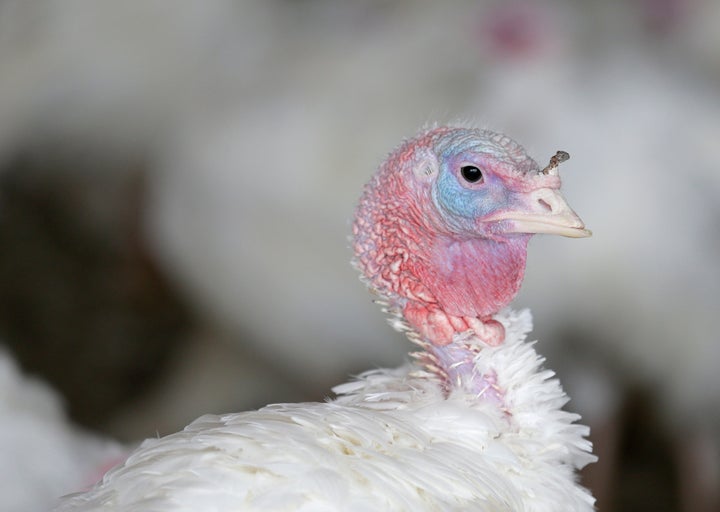Bird flu cases are on the rise across the country as wild flocks migrate south for the winter, mingling with domestic poultry farms and backyard birds as they go.
As of Nov. 7, bird flu has been confirmed in 67 flocks across the country in the last 30 days, leading to the deaths of 3.72 million birds across commercial and backyard flocks.
That’s a sharp rise from August, when just 60,000 birds were affected, according to USDA data.
The virus has ebbed and flowed since the USDA first confirmed the arrival of highly pathogenic avian influenza (HPAI) in a commercial flock in February 2022.
However, this time around, we have less insight than before, thanks to staffing cuts at federal labs, rule changes that restrict who government scientists can communicate with and the ongoing federal government shutdown.
A spokesperson for the U.S. Department of Health and Human Services told HuffPost the CDC deactivated its H5N1 emergency bird flu response on July 2, 2025.
It’s now considered a regular program under the purview of the CDC’s Influenza Division, they said, in addition to “other appropriate agency programs.”
In April, Health and Human Services Secretary Robert F. Kennedy Jr. drastically shrunk the agency tasked with protecting Americans’ health, cutting nearly a quarter of its staff ― equivalent to 20,000 workers.
Wendy Puryear, a virologist at Tufts University, told NPR that in the past, influenza researchers were constantly exchanging information with their counterparts in the federal government. That’s no longer the case.
Under Trump, she said, “much of that infrastructure has been either completely closed down or significantly hampered.”
“We’re not in a great position for monitoring things,” she added. “I’ve been deep in the weeds since it arrived here in the U.S., and I’m finding myself in a very uncomfortable place.”
 Turkeys enjoy their last days before the Thanksgiving holiday at Ashley Farms in Flanders, N.J., Tuesday, Nov. 13, 2018.
Turkeys enjoy their last days before the Thanksgiving holiday at Ashley Farms in Flanders, N.J., Tuesday, Nov. 13, 2018.
While the USDA continues to track the virus in poultry, livestock and wild birds, spillover events in the humans who work alongside them are likely going undetected.
It’s likely immigrant workers are not reporting exposures, Angela Rasmussen, a virologist at the University of Saskatchewan in Canada, told the Associated Press in May.
“I can’t argue with anyone who would be risking getting shipped to a Salvadoran gulag for reporting an exposure or seeking testing,” she said.
An Oct. 29 report in JAMA Network Open, an open-access medical journal, identified at least 18 cases of asymptomatic H5N1 infections worldwide through Aug. 25, 2025.
In May, RFK stated that he plans to ban government scientists from publishing in medical journals such as JAMA, The Lancet and the New England Journal of Medicine.
One bright spot: So far, the risk to humans at large remains low, the National Foundation for Infectious Diseases Medical Director Robert Hopkins Jr., MD, said in an update last year.
“The general public is at low risk, but persons who are working with or exposed to dairy cows, those who work with poultry in commercial operations or even in backyard flocks, and persons with direct exposure to wild birds, particularly those that have died, are at increased risk.”
Hopkins advised anyone who encounters a sick or dead bird, or any other potentially sick animal, to give it a wide berth.
TheTideHas Turned
Your SupportFuelsOur Mission
Your SupportFuelsOur Mission
Cut through the chaos
Americans just sent Trump a clear message — and Dems are calling it “a 5-alarm fire” for the president. Our reporters are here to keep you informed and make sense of Washington’s chaos. Join HuffPost and be part of what happens next.
We remain committed to providing you with the unflinching, fact-based journalism everyone deserves.
Thank you again for your support along the way. We’re truly grateful for readers like you! Your initial support helped get us here and bolstered our newsroom, which kept us strong during uncertain times. Now as we continue, we need your help more than ever. .
We remain committed to providing you with the unflinching, fact-based journalism everyone deserves.
Thank you again for your support along the way. We’re truly grateful for readers like you! Your initial support helped get us here and bolstered our newsroom, which kept us strong during uncertain times. Now as we continue, we need your help more than ever. .
Already a member? Log in to hide these messages.
“If you must be in contact with potentially sick animals or birds, use personal protective equipment including masks and gloves, and wash your hands afterward,” he said. “If you have symptoms after you have been in contact with these animals, talk to a health care professional. While the current threat is low, we need to remain aware.”

